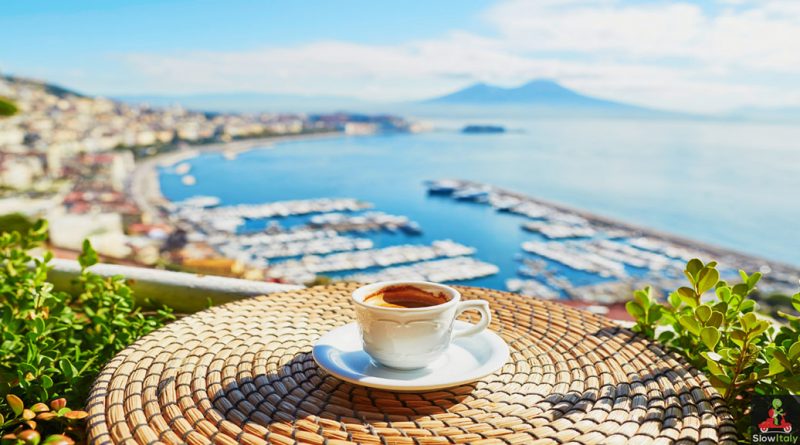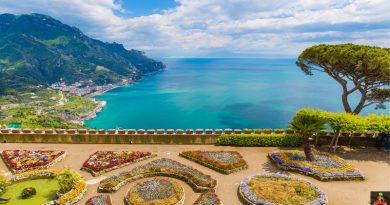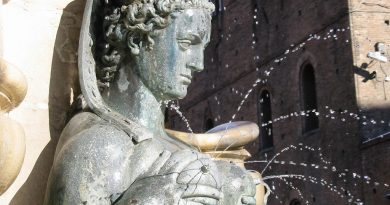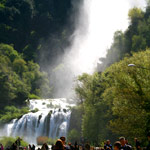20 Things you can only do in Naples
Often misunderstood, Naples is a surprising, ever-changing city. Kaleidoscopic and multifarious, the city offers a novel experience every time you visit.
It would probably take a month to get a decent overview of the diverse areas of the city and the boundless artistic, gastronomic and historic treasures that it holds in store. Not surprisingly, many an author has described the city as one of the most fascinating and beautiful in the world.
Whether you are on a day-trip from the Amalfi Coast or on a dedicated city-trip, here is our (non-exhaustive) list of Top 20 things that you can only do in Naples.
1. Admire the masterpiece of the Veiled Christ at Cappella Sansevero
Hidden in a back street off Via dei Tribunali and Via Nilo stands the beautiful Cappella Sansevero, the tomb-chapel of the Sangro di Sansevero, one of the most ancient noble families of Napels. If you can only see one thing in Naples then it should probably be this Chapel which contains a number of remarkable treasures.
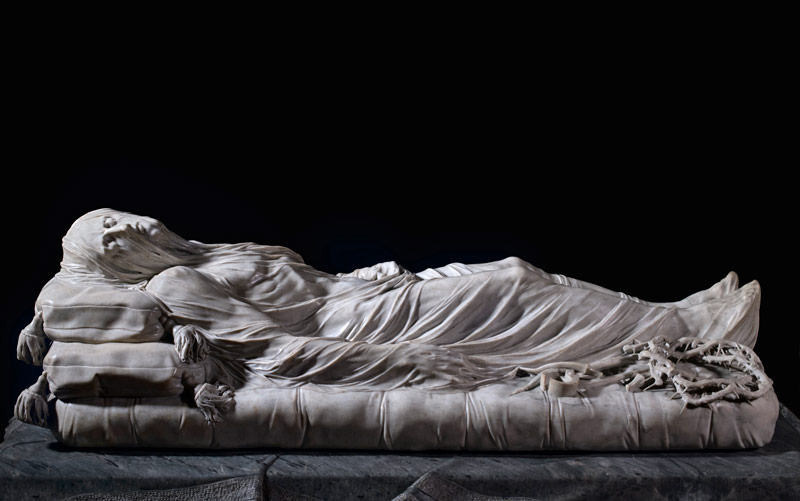
Photo by Marco Ghidelli © Archivio Museo Cappella Sansevero
Central to the collection is the Veiled Christ of Sanmartino, one of the most impressive and intriguing art works in the world. Entirely carved in marble in 1753, the Christ statue seems to be covered with an infinitely thin veil, which is actually carved from the same block.
The incredible transparency and subtilty of the hard marble veil, barely revealing the facial expression of the Christ, his tortured hands and feet and martyred body, is so unusual that some have suggested that it must have been applied afterwards and “petrified” (turned into a stone-like material) using a technique known only by the artist. However, general consensus is now that the statue and veil were carved from the same block of marble.
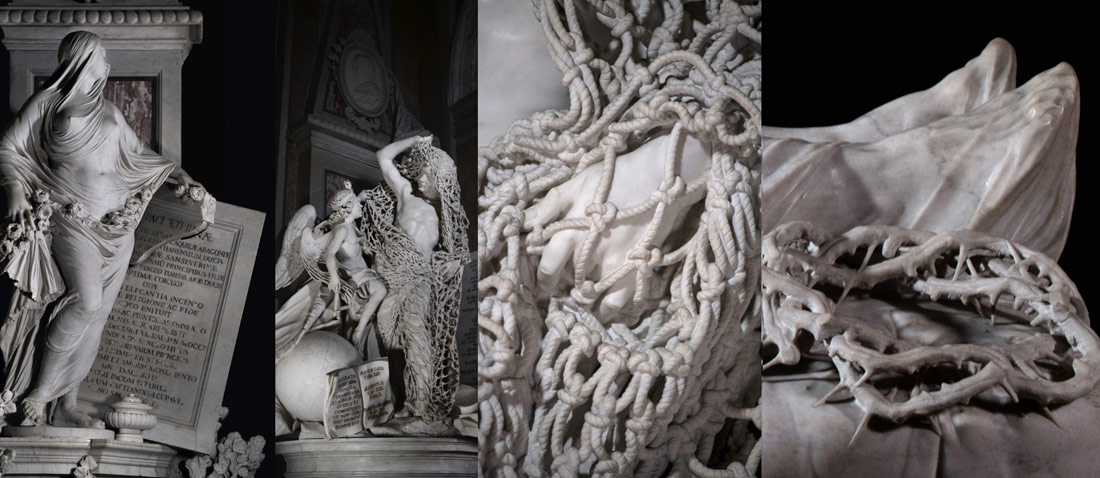
Particularly noteworthy among the richly decorated chapel are also Pudicizia (Chastity) by Antonio Corradini, representing the mother of Prince Raimondo de Sangro who died when he was very young, and Disinganno (Disentchantment) by Francesco Queirolo, with its impressive net delicately carved in stone, dedicated to the Prince’s father who led and adventurous and tormented life .
2. Attend an opera performance in the oldest opera house of Europe
A trip to Naples would probably not be complete without a visit to Opera San Carlo, the world’s oldest opera house in continuous operation. Inaugurated in 1737, thus, decades before La Scala (Milan) and La Fenice (Venice), the Neapolitan opera house is a true institution. See: Top 5 opera houses in Italy.
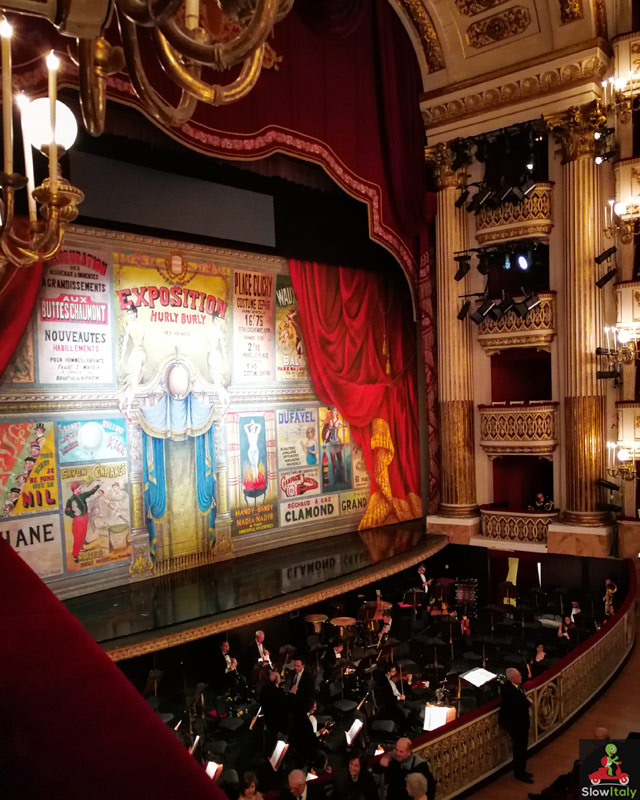
At the time when Teatro San Carlo was built, Italy and Naples were the epicenter of European musical culture. Before its annexation to the Kingdom of Italy in 1861, Naples was indeed one of the most opulent cities of Europe, comparable in size to Paris and London.
Composers of that time, such as Haydn, Bach, Rossini, Donizetti and Mozart, all stayed for a brief or longer time in Naples. Neapolitan music was considered the pinnacle of fashion, and Naples a source of inspiration for musical genius.
Many an aspiring musician would travel to Naples to perfect their technique. Even the Swiss 18th-century philosopher Jean-Jacques Rousseau referred to Naples as the ‘capital of the musical world‘, urging young artists to ‘run and fly to Naples to go and listen to the master pieces’ that were being performed there.
(Jean-Jacques Rosseau, 1768)
Well into the 19th century San Carlo continued being at the origin of new musical orientations with Pucini, Mascagni, Leoncavallo and Giordano.
So, what better place to admire the old world grandeur of times bygone than this beautiful historic opera house, while sipping a glass of champagne with little appetizers in the foyer, amidst the bella gente di Napoli, waiting for the performance to begin?
See also: Italian opera
3. Embrace the exclusive view of the bay of Naples
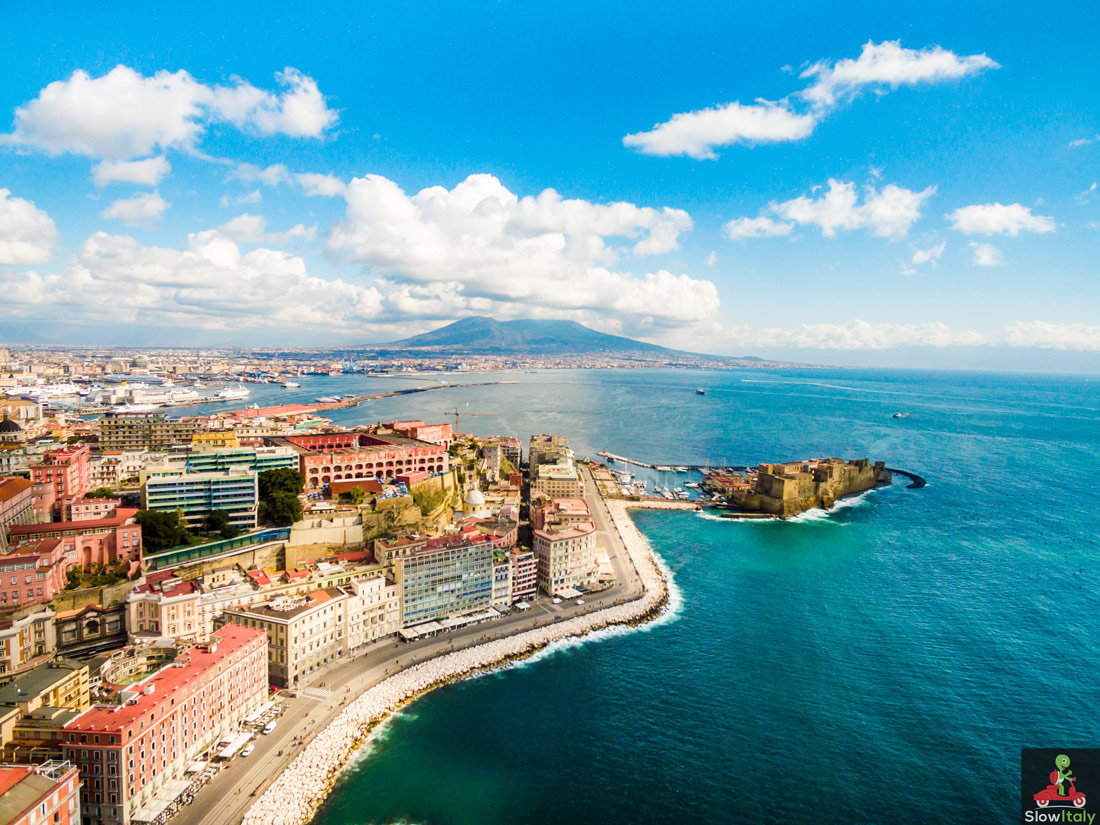
There are several panoramic points from which you can enjoy a breathtaking view over the bay of Naples and the Vesuvius. If you are planning to stay in a hotel on Via Partenope we definitely recommend to pay the little extra for a room with a seaside view. You won’t regret it.

Via Partenope is a lovely seaside promenade on which you’ll find Castel dell’Ovo at the very site where the legendary siren of of Naples washed ashore and. Closeby is also the Fontana del Gigante or Fountain of the Giant, a monumental fountain designed in the 17th century by Michelangelo Naccherino and Pietro Bernini (the same who designed the Fountain of the Four Rivers of Piazza Navona in Rome) for the Royal Palace of Naples, before it was transferred to its current location.
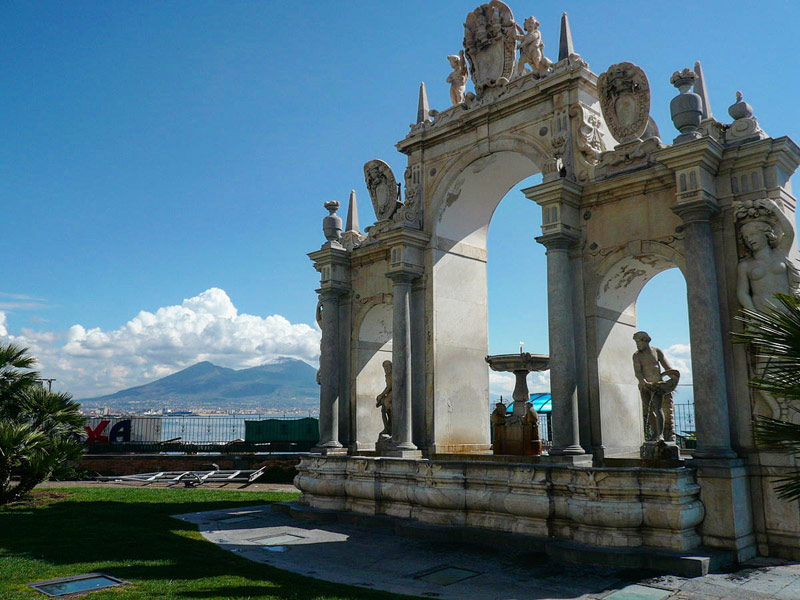
Another panoramic viewpoint is from the former monastery Certosa di San Martino located on the Vomero hill, now turned into a museum considered the true museum of Naples. The Carthusian monks who inhabited the monastery commissioned the greatest artists of the 16th and 18th centuries to adorn their magnificent edifice. The hanging gardens of the Certosa offer stunning views over the bay.
Also in Vomero is the Villa Floridiana, offering equally stunning views over the bay of Naples.
4. Do some castle-hopping in the city of castles
Once known as ‘la città dei sette castelli‘ (the city of the seven castles), Napoli is probably the town with the highest number of castles in the world. Over the centuries the city has been equipped with a strategic defensive system consisting of the following fortifications: Castel Capuano, Castel dell’Ovo, Castel Nuovo (Maschio Angioino), Castel Sant’Elmo, Castello del Carmine, Castello di Nisida and the Vigliena Fort.
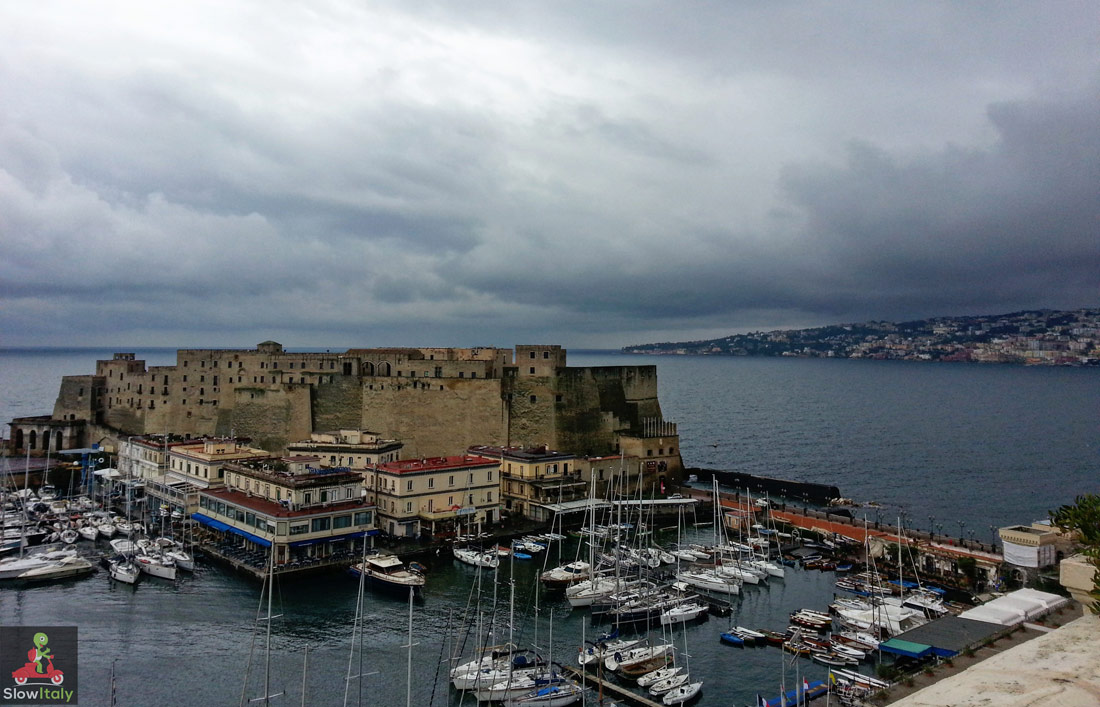
The most famous of Naples’ castles is probably the seaside Castel dell’Ovo, the oldest standing fortification of the town. Located on the peninsula Megaride (previously an island), where, according to the legend, the body of the virgin siren Parthenope was burried and the first nucleus of the city was founded, even before Neapolis.
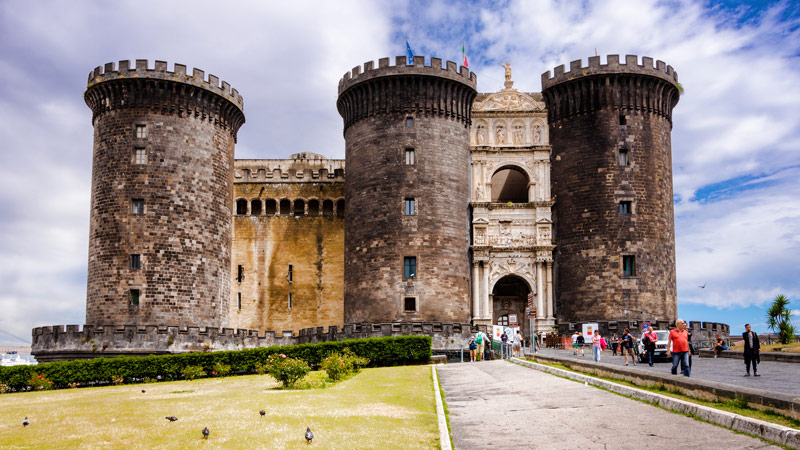
Another important castle of Naples is Castel Nuovo also known as Maschio Angioino royal seat for kings of Naples, Aragon and Spain until 1815.
Then there is also Castel Capuano, located at the southwest end of Via dei Tribunali and which gave the street its name as at the time of Don Pedro di Toledo this castle was the town’s Court of Justice (tribunale in Italian).
5. Indulge in three Neapolitan classics (beyond Pizza)
Besides the acclaimed Neapolitan pizza, there are three other authentic icons of the city that should probably feature on your to-savor list: mozzarella di bufala (the best being produced in Campania, the region around Naples), sfogliatella (the typical Neapolitan breakfast pastry) and tazzulella, a true Neapolitan cup of coffee.
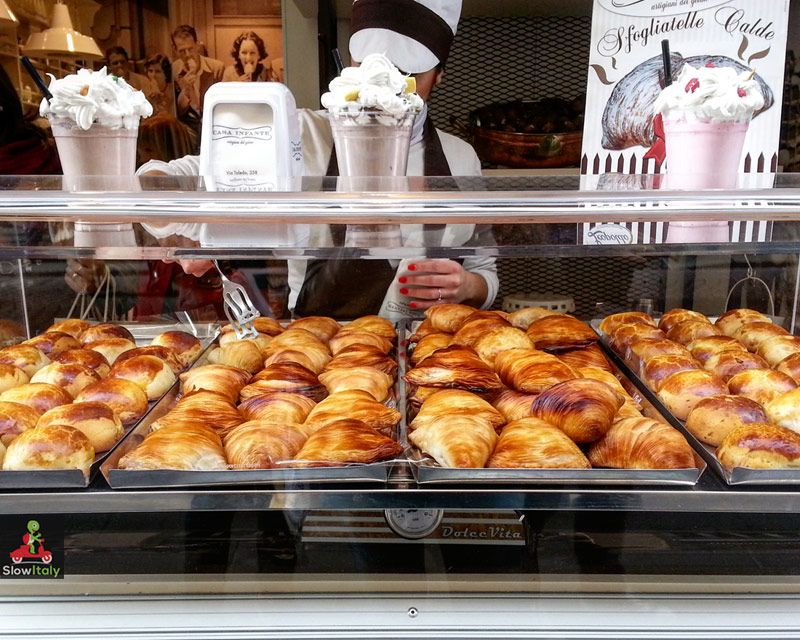
You’ll find very good sfogliatella at Mary (a tiny shop just off Via Toledo in Galleria Umberto I), Pintauro, Scaturchio and Attanasio.
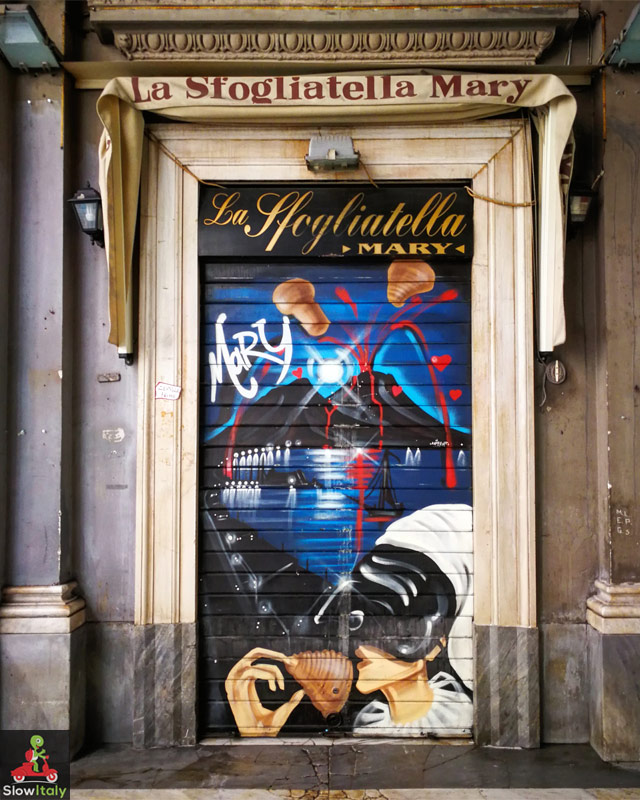
Na tazzulella ‘e caffè means a cup of coffee in Neapolitan. While coffee preparation is highly codified all over Italy, Neapolitans take it a step further. Read more: Mozzarella, sfogliatella, tazzulella.
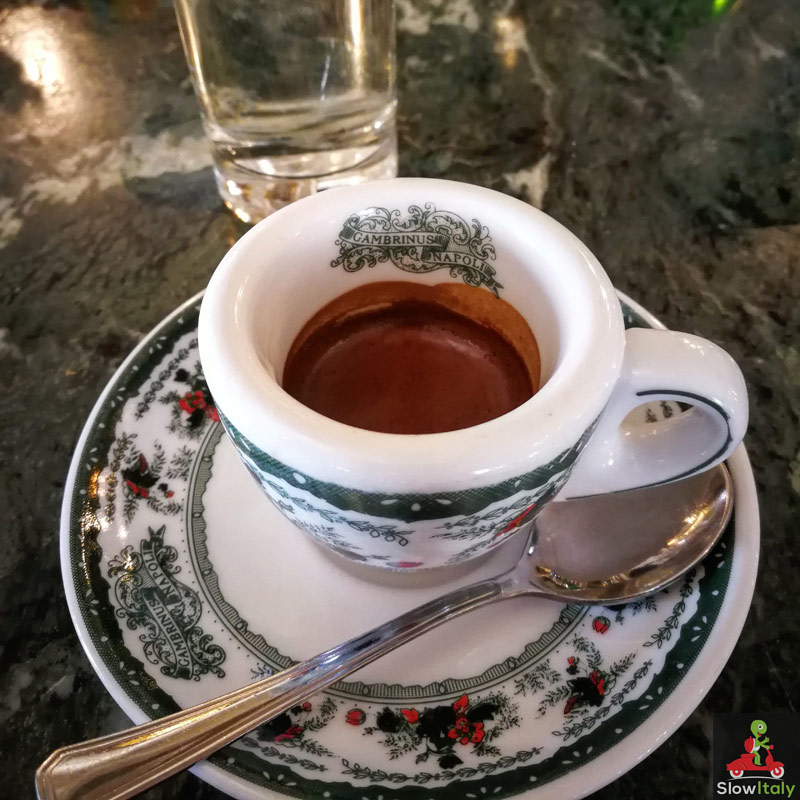
6. Relax and satisfy your sweet tooth at the elegant Caffè Gambrinus
Now that you’ve read what an authentic Neapolitan coffee is like, you may want to try one at Caffè Gambrinus, one of the classic cafés where they serve your coffee in a Neapolitan cup. It is also one of the historic, literary cafés of Italy. Founded one year before the Kingdom of Italy, the café counted Giuseppe Verdi, Gabriele d’Annunzio, Oscar Wilde and Sartre among its clients.
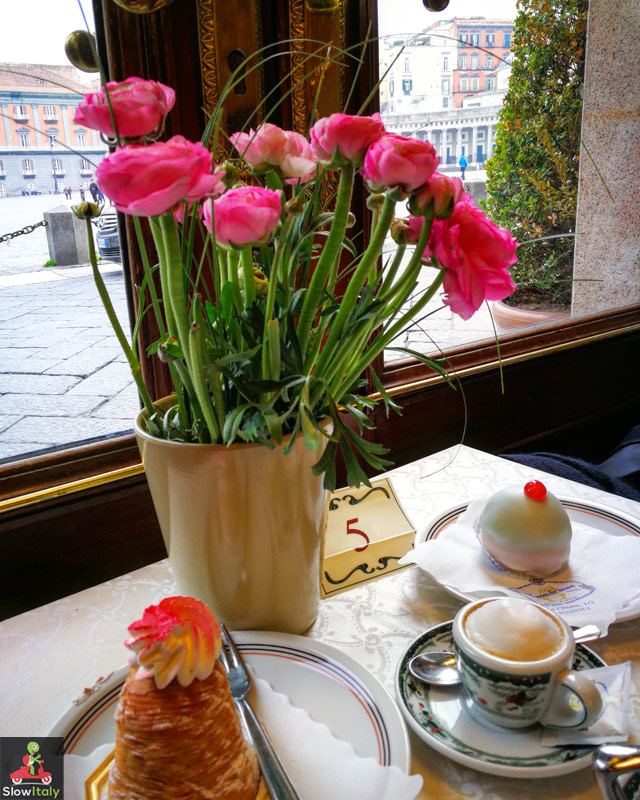
Adorned with statues, stucco, paintings and lunettes the elegant café served (and still does) as a center of social and cultural life where politicians, artists, intellectuals, tourists and locals mingle with the opera singers who perform at the nearby opera house San Carlo.
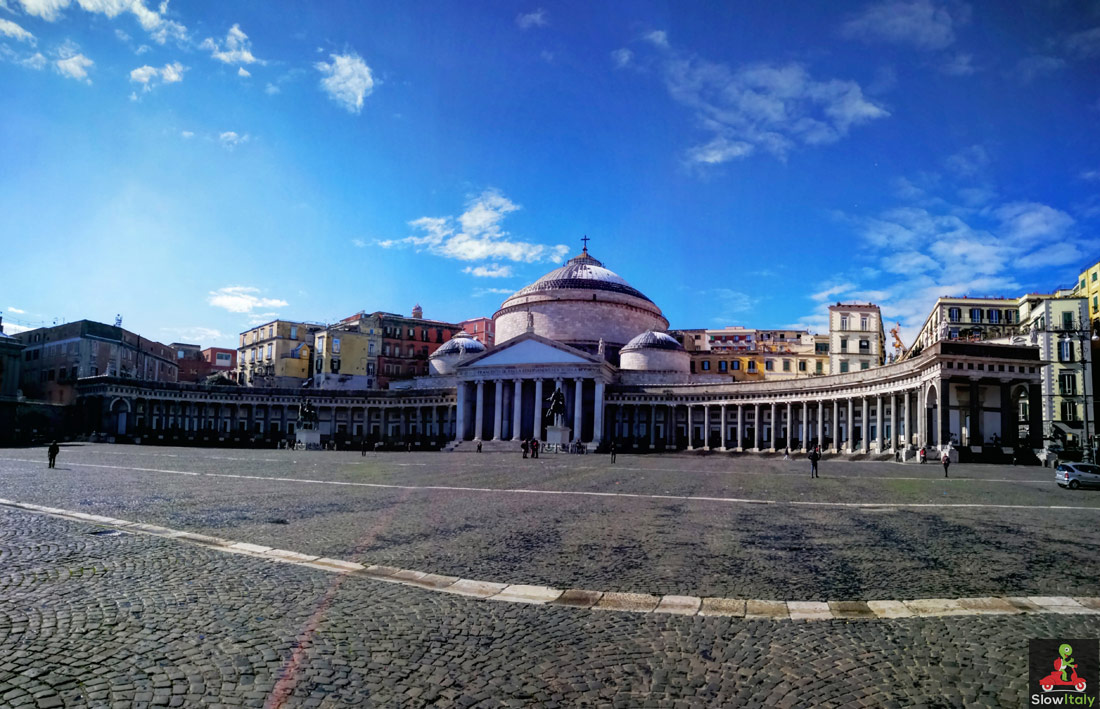
While Italians traditionally drink their coffee al banco or in piedi, at Caffè Gambrinus it might be worth enjoying the atmosphere of the sophisticated salons at the back of the literary café, treating yourself with a coffee and pastry while enjoying the view over the adjacent Piazza del Plebiscito, the main piazza of Naples (named after the plebiscite of October 2, 1860 that made Naples part of the unified Kingdom of Italy).

Try Gambrinus’ babà con panna (with whipped cream), one of the best in town. Just take into account that in Italy, and Naples is no exception, there is usually a considerable difference in price between a caffé seduto and caffé in piedi (taking your coffee seated versus standing).
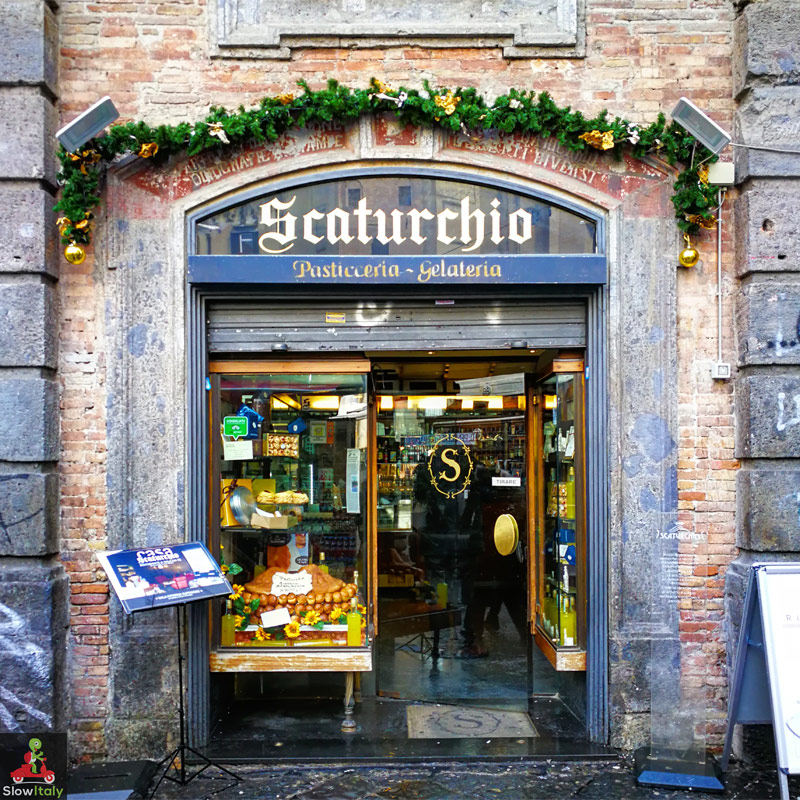
Our personal favorite babà, however, which melts like butter in your mouth, is the one from Scaturchio, in Piazza S. Domenico Maggiore, not far from Cappella Sansevero mentioned in our first point.
Worth trying are also their ministeriali (chocolates with a ‘secret’ filling), and the Vesuvio and chocolates of Gay-Odin (they have several shops in the city). For more information about the historic chocolatiers of Naples see: 5 Italian towns for chocolate lovers.
7. Chill out in a maiolica oasis in the middle of the city
In the center of the old city lies the surprising Cloister of Santa Chiara, dating from 1310. The Church is in its original gothic style with simple façade, but what is even more surprising is the maiolica garden, an oasis of colored tiles covering the garden’s characteristic octogonal pillars and benches and representing floral decorations (attributed to Donato and Giuseppe Massa), and rural, maritime and mythological scenes.
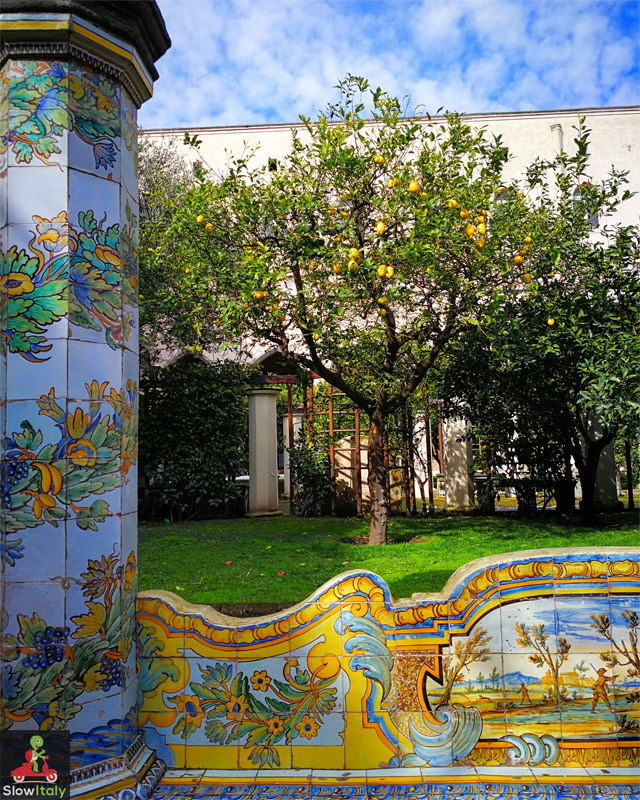
The garden is divided into four areas by two intersecting lanes according to a plan carried out by D.A. Vaccaro between 1739 and 1742. If you fancy colored tiles, this is the place to get your fix!
The walls of the cloister are covered with seventeenth century frescoes depicting saints, allegories and scenes of the Old Testament.
8. Visit the largest historic city center in Europe
Declared a Unesco World Heritage site in 1995, the historic center of Naples is the largest historic center of Europe, developed through 27 centuries of history (from the 8th century BC to the baroque Spanish city, when the city started expanding westwards).
The true authentic historic center of Naples consists of two parts: the hill of Pizzofalcone, where the city of Parthenope was founded in the 8th century BC, and the area of the Decumani of Naples where the new urban center of Neapolis was refounded further inland in the 6th century. The latter corresponds grosso modo to the Tribunali and Spaccanapoli areas. As a result the original center of Parthenope came to be called Palaeopolis, the “old city”.
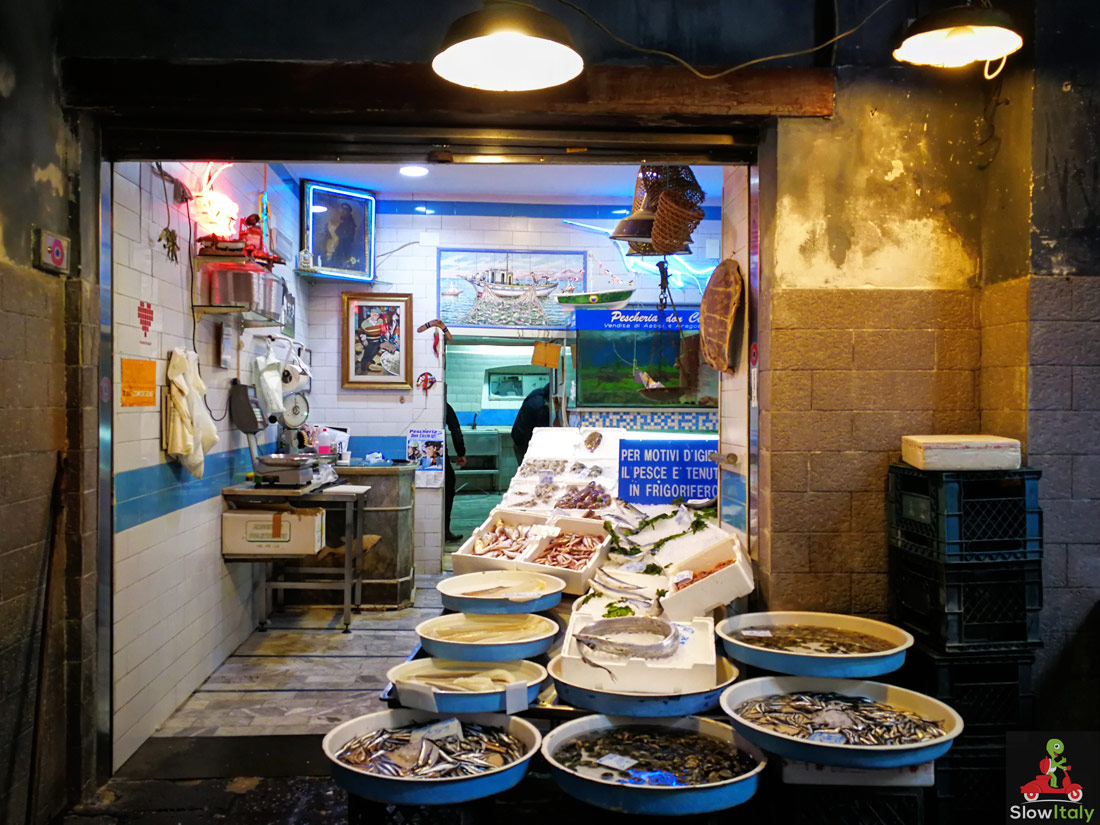
Neapolis, literally “the new city”, developped between Via Foria, Corso Umberto, Castel Capuano and Piazza Bellini. The area of the Decumani of Naples consists of the three main streets laid out in ancient Greek times that cross the old Neapolis in its entirety: the decumano superiore, corresponding to the present Via della Sapienza, via dell’Anticaglia and via Santi Apostoli; the decumano maggiore; the heart of the Decumani of Naples, corresponding to the current Via dei Tribunali and the decumano inferiore, known as Spaccanapoli as the long street divides Naples in two parts.
The fact that the original lay-out dating from ancient Greek times has been preserved in its entirety makes the historic center of Naples pretty unique.
9. Meet and greet the unique icons of Naples
In Via dei Tribunali have a stop at the statue of Pulcinella, the character of the Commedia dell’Arte and icon of Naples, also considered a good luck charm. In the same street you’ll find one of the most famous pizza making families of Napels: Sorbillo.
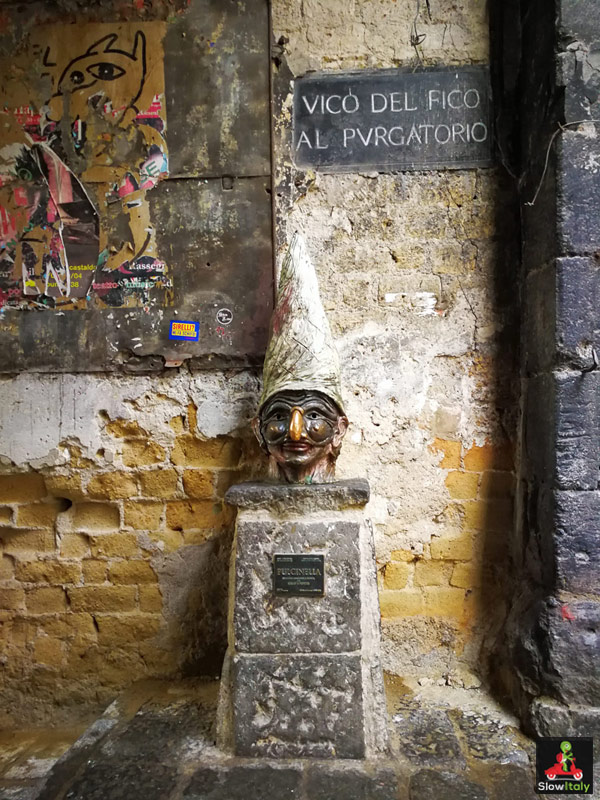
Another Neapolitan icon is the Fontana della Spinacorona, the oldest, yet least famous of the Parthenope fountains of Naples, dating back to 1498.
According to the legend, the virgin siren Parthenope was at the origin of the founding of Naples. It is on the site of her tomb that the Greek colonists founded the first settlement even before the founding of Neapolis. Still today Neapolitans are known as “Parthenopeans” after the name of the virgin siren (parthenos = virgin in Greek).
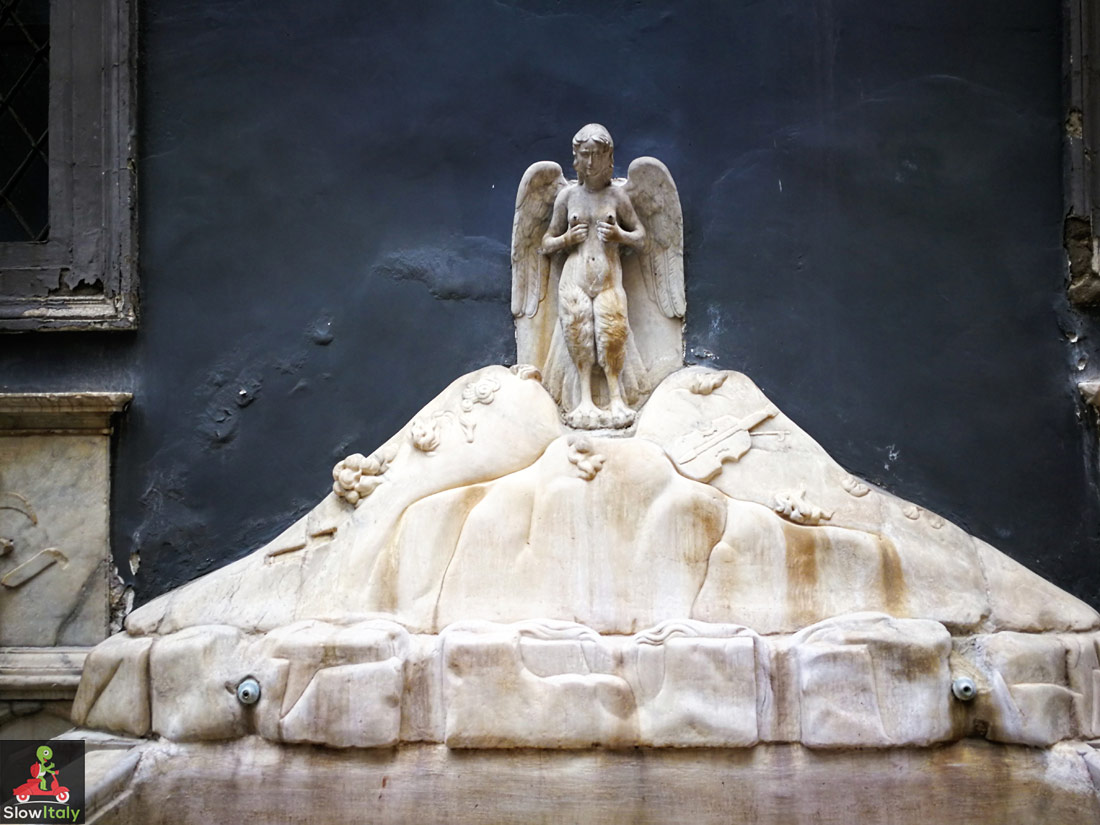
The delicate Fontana della Spinacorona is the only Parthenope fountain still in its original form, showing the siren with wings and bird legs (before being morphed into a siren in the Middle Ages). The original of the fountain is housed in the San Martino Museum of Naples, a museum worth visiting, by the way.
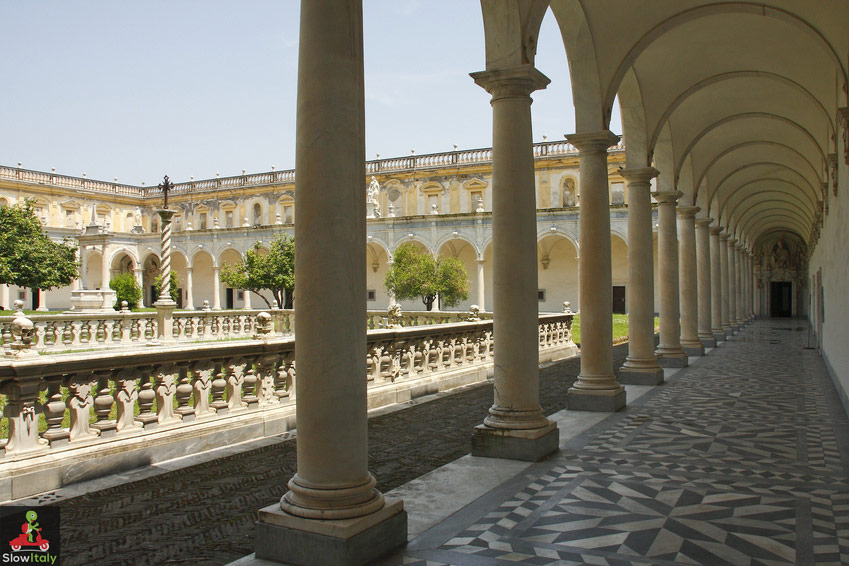
10. Admire three paintings by the genius of chiaroscuro, Caravaggio
Naples counts three paintings by the great artist Caravaggio, which on their own would probably justify a trip to the city. Caravaggio was an influential painter of the 1590s to 1610 who was active in Naples in 1606 and 1609-1610 and became renowned for his mastering of the chiaroscuro technique.
He was also a fascinating personality who even in his own lifetime was considered enigmatic, rebellious and reckless.
The three Caravaggio that can be admired in Naples are:
The Seven Works of Mercy, in Pio Monte della Misericordia. The painting was purposely commissioned for and has never moved from Pio Monte della Misericordia.
Originally, the idea was to make seven single paintings to be hung around octagonal cross plan of the church. However, the artist decided to combine all seven corporal works of mercy into one composition, which serves as the church’s altarpiece.
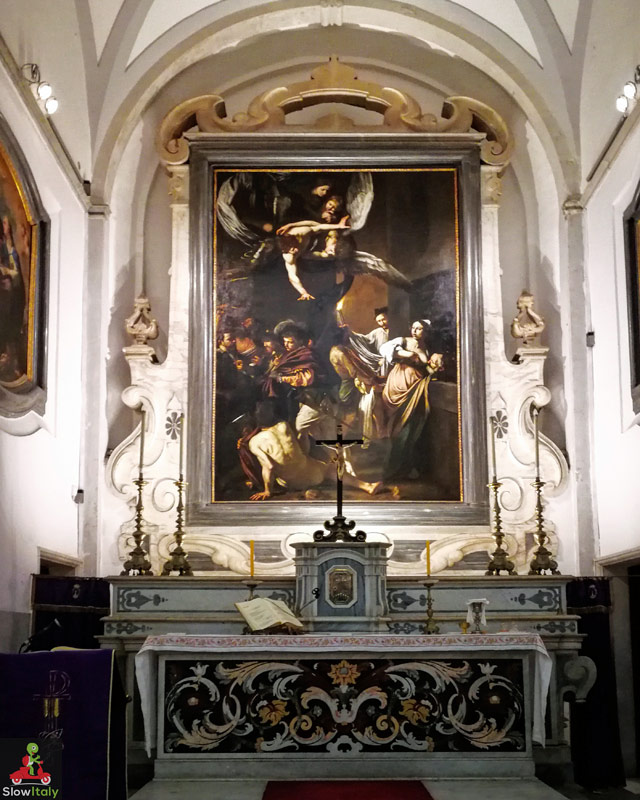
The Flagellation of Christ in the Museum of Capodimonte
The Martyrdom of Saint Ursula, his last known work, created in Naples in 1610, in Palazzo Zevallos Stigliano.
Please always check whether the latter two paintings have not be lend out to other museums, as they do travel quite a lot.
11. Get a surprising lesson in anatomy with the Anatomical Machines and the Museo Anatomico
At the Cappella Sansevero mentioned in our first point there are also the very intruiging Anatomical Machines dating from the 1700s.
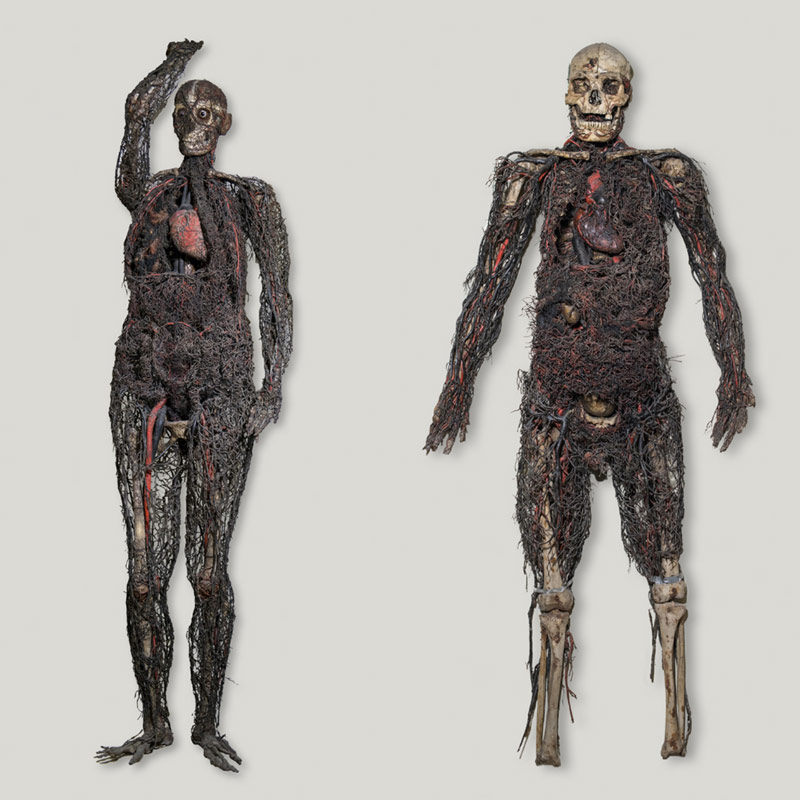
They consist of two mummified human corpses with complete vascular and digestive systems. The vascular and digestive systems were preserved using a special kind of solidifying process. The anatomical machines look so unreal that many a guide book will tell you that the veins and arteries were made from synthetic material. However, the funny thing is that the medical and anatomical knowledge needed to reconstruct such a precise and detailed vascular and digestive system was still lacking at that time.
Complete autopsies were still rare and the capillary system connecting arteries and veins had only been discovered in animals in 1661, by Marcello Malpighi, but it would take more than a century before that science became general knowledge even among scientists.
So, imagining that the anatomical machines were hand-crafted more than two hundred years ago is even more surreal than accepting the theory of the secret “petrification” recipe.
One horrific detail is that it is not know whether this “operation” was performed before or after the death of the subjects….
Worth mentioning in the same breath is the anatomy museum of Naples (Museo Anatomico della Seconda Università), one of the oldest and most important of its kind in the world. It features some very rare medical instruments and samples, while being one of the few open to the general public (a few days a week), as often these types of museums are strictly reserved to students and scholars.
12. Get a glimpse of Naples’ cult of capuzzelle, the Neapolitan skull cult
Naples has always had an uncomplicated relationship with death. As we have seen, according to the legend, the city was founded on the very site where the drowned siren Parthenope washed ashore. This unfashioned vision of death is also visible in the popular cult of capuzzelle, the devotion materialized into a tangible part of the deceased, their skulls. Neapolitans pray to their deads as much as they pray their saints.
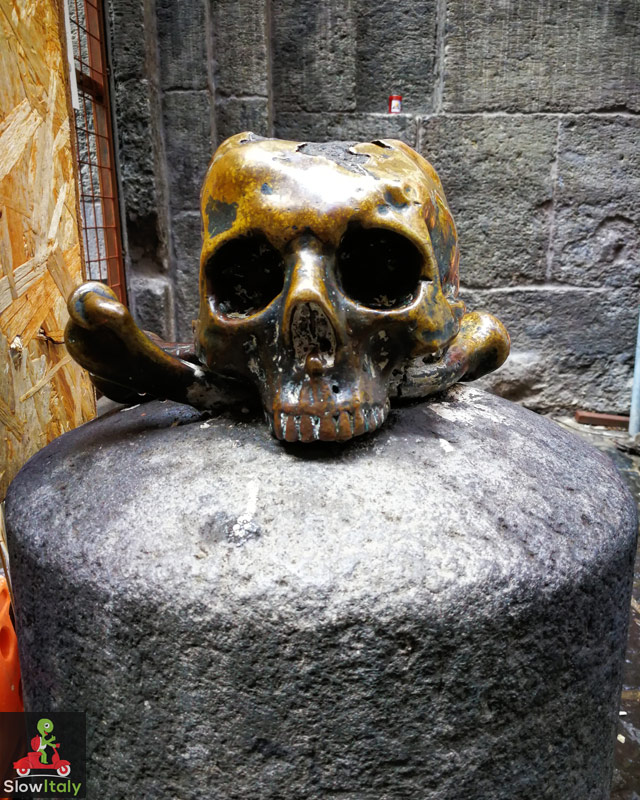
The Neapolitan Skull Cult existed from 1605 to 1959, until the worship and handling of skulls and non-saintly remains was outlawed by the Church primarily for sanitary reasons.
The origin of this cult is probably to be found in the Church Santa Maria delle Anime del Purgatorio ad Arco, in Via Tribunali, although there used to be three other places in Naples where this cult was practiced: the Cimitero delle Fontanelle, San Pietro ad Aram and Santa Luciella a San Biagio.
Santa Maria delle Anime del Purgatorio ad Arco consists of a baroque Upper Church and the auster Lower Church, representing the Purgatory, where people could take care of the last and most miserable among the poor souls, the pezzentelle, represented by the anonymous capuzzelle (skulls). It is said that even when some of the skulls disappeared, locals memorized their placement and would still bring flowers, offerings and messages to take care of the anime pezzentele.
13. Go ‘a zonzo’ in the Quartieri Spagnoli
Another, historically more recent, part of Naples that is still considered part of the old Naples are the Quartieri Spagnoli. Long considered the infamous, populous part of Naples, this unique part of the town was created in 1563 to station the Spanish Military garrisons, hence the name. The Spanish troops had been recruited to curb possible revolts among the Neapolitan population.
The Quartieri Spagnoli are a grid of narrow, crowded streets laid out like a chessboard by the Spanish politician and first viceroy of Naples, Don Pedro de Toledo. Some of the labyrinthine streets are connected by staircases and so narrow that daylight hardly reaches the pavement. The most colorful part of the Tavoliere, as it is locally referred to, is that immediately adjacent to Via Toledo (see next point).
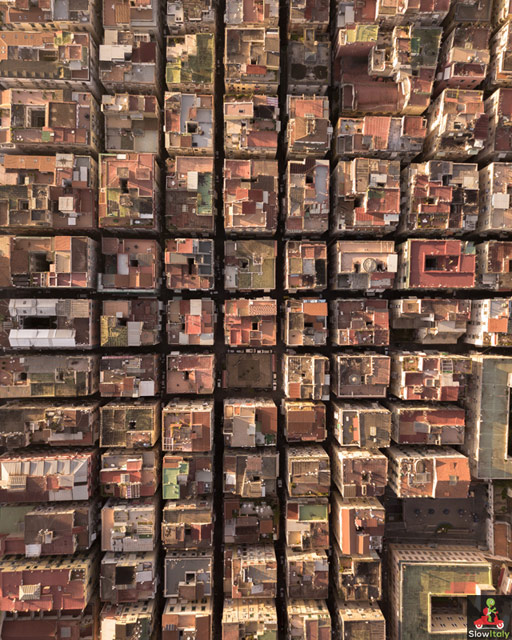
One of the streets of the Quartieri Spagnoli, Vico due Porte a Toledo, has been recoined Vico “delle Stelle” (literally Star street) and adorned with blow-ups of Sophia Loren, Totò, Pino Daniele and other celebrities of the Neapolitan culture. The quarter’s typical street theater looks like an open-air film set and some famous movies were actually shot here such as Vittorio De Sica‘s movie Matrimonio all’italiana (Marriage Italian Style) featuring Sophia Loren and Marcello Mastroianni.
So, f you want to see what an authentic, very lively, Neapolitan neighborhood looks like then a visit to the Quartieri Spagnoli should be on your list. “Andare a zonzo” means to go for a stroll. In case you do go for a stroll, make sure to check your itinerary as you can very easily get lost in the labyrinth of narrow streets. For the same reason we would not recommend to visit the neighborhood after dusk. An uncomplicated alternative is to visit the neighborhood by taxi.
so I like the mixture of drama and comedy alltogether”
(Sophia Loren)
14. Walk the famous streets celebrated by Flaubert and Stendhal
Described by Flaubert as “a long promenade of green oaks, the trees forming a tunnel and the murmur of the waves in the background” Via Chiaia is quite different from the other streets of Naples. The atmosphere described by the author is still visible in the first part of the street that connects the sea promenade with Piazza del Plebiscito and which still features the ‘tunnel of trees’ as described by Flaubert.
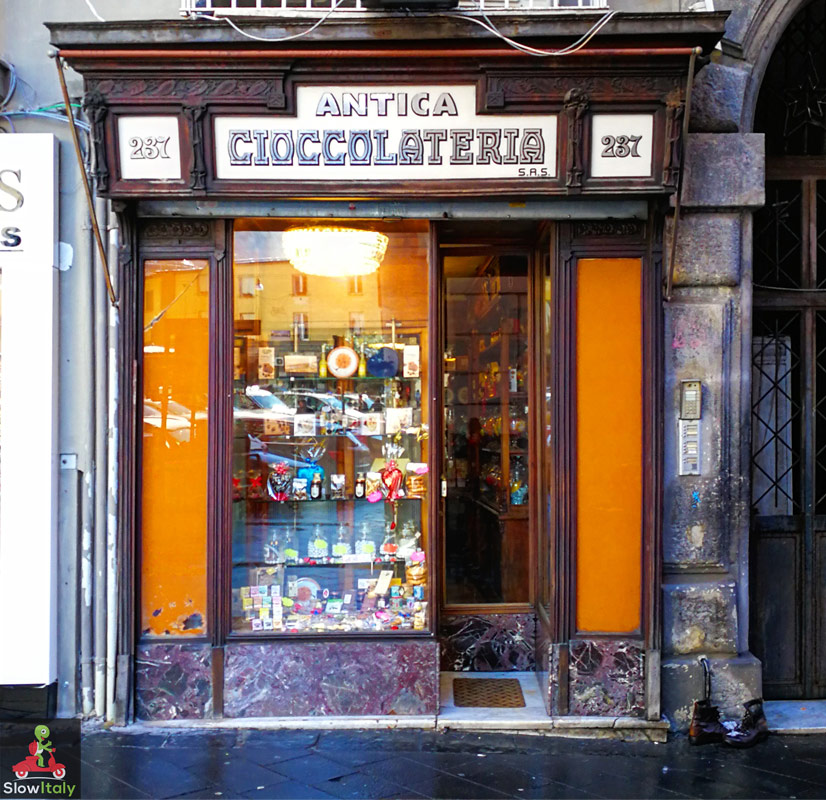
The street is lined with shops, among which the Antica Cioccolateria, and lots of boutiques. There are the Gradoni di Chiaia. The Ponte di Chiaia crosses the street and connects Pizzofalcone and Mortelle hills.
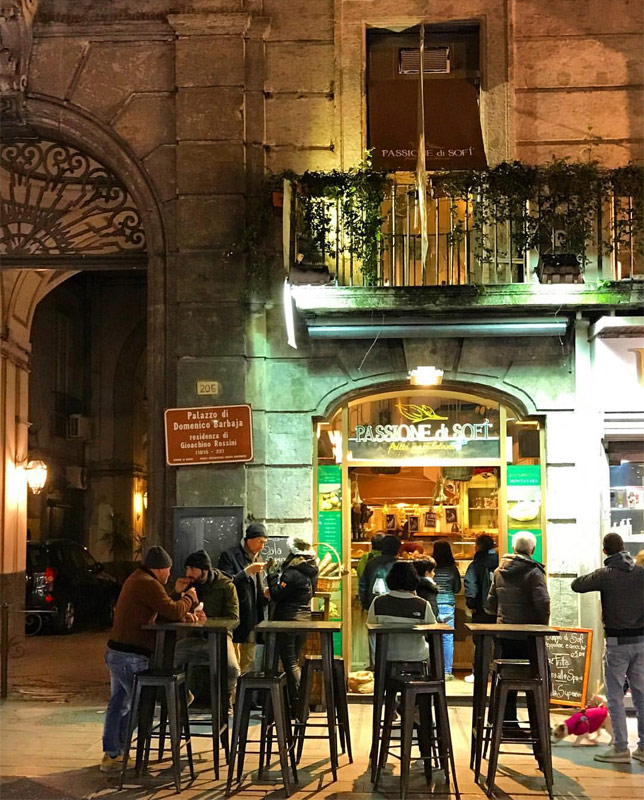
Via Toledo, described by the French writer Stendhal as unforgettable, starts in the Royal Quarter and stretches up to the Museo Archeologico.
15. Have dinner in one of the chic hill-top quarters of Naples
Posillipo is one of the chic hill-top quarters of Naples. The beautiful road leading up to Posillipo’s Piazza San Luigi from the center of Naples is lined with lavish villas. The name of the Church Santa Maria di Bellavista testifies of the stunning views one can enjoy from here.
Worth seeing at the summit of the hill is the Parco Virgiliano. It was so called because it is believed that it is here that Virgil was buried. While this is probably a legend, the park does house the burial place of Giacomo Leopardi.
One of the iconic villas of Naples (with a scandalous reputation), Villa Donn’Anna is also located in Posillipo. Marechiaro is a small hamlet located in the Posillipo quarter doted with gorgeously romantic spots.
We had dinner at the genuine, family-run restaurant Dal Poeta, serving a delicious linguine with lobster.

16. Learn to sing a few typical Neapolitan songs
Naples is probably the only city in the world that can pride itself of having several songs in the local language that have become incredibly popular abroad. The song O sole mio, dating from 1898, was covered by Elvis as It’s Now or Never.
The song Funiculì Funiculà, originally composed in 1880 to celebrate the opening of the first funicular cable car on Mount Vesuvius, was popularized by the composers Richard Strauss and Rimsky-Korsakov, and more recently by Disney and Il Volo.
Another Neapolitan song became the hymn of a major feast day in Scandinavian countries. Read more: Italian music and Santa Lucia.
17. Get acquainted with the Smorfia terminology
Magic and superstition have been a constant theme in Neapolitan culture. One of the typical expressions of this tradition is the smorfia. Although present throughout Italy in different versions, the smorfia is really typically Neapolitan. It is a system used to convert dreams and everyday life events into numbers that are then used to play at the lottery. The interpretation of the events is not straightforward, though, as many metaphorical and contextual interpretations may come into play.
To understand Naples, one has to grasp a little of the meanings behind the smorfia. Read more about the smorfia.
18. Admire Naples’ art of sartoria
While Milan is internationally acclaimed as the fashion capital of Italy (even though some of the most famous Italian designers are from Rome and Florence), Naples is Italy’s historical capital of sartoria (tailoring) and menswear. For centuries Naples has been lauded for its impeccable tailoring and hand-made ties.
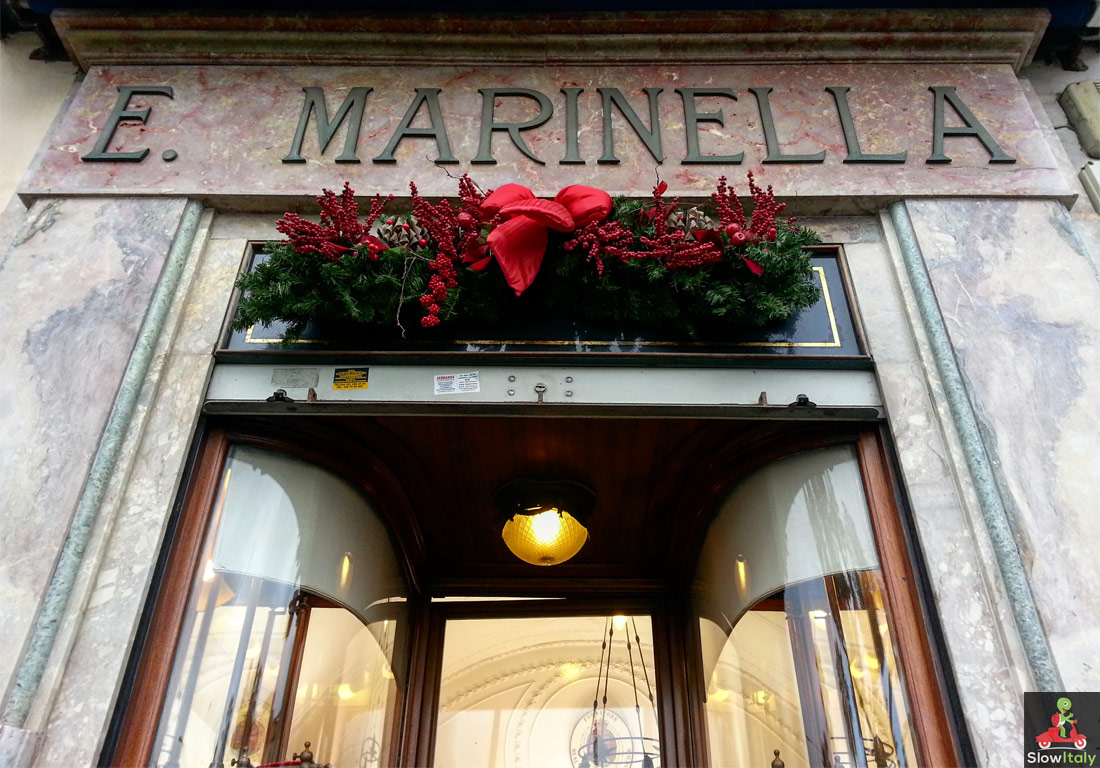
The family-run artisan shops have been passed down from generation to generation. In the local workrooms, the pieces are hand-cut by scissors and almost entirely stitched by hand.
19. Walk through the ‘crib street’ of Naples
Via San Gregorio Armeno is famous for its little (work) shops selling small, hand-carved figures especially made for the nativity scenes (presepi) set up in Italian families during Christmas time. Read more about the Italian presepe.
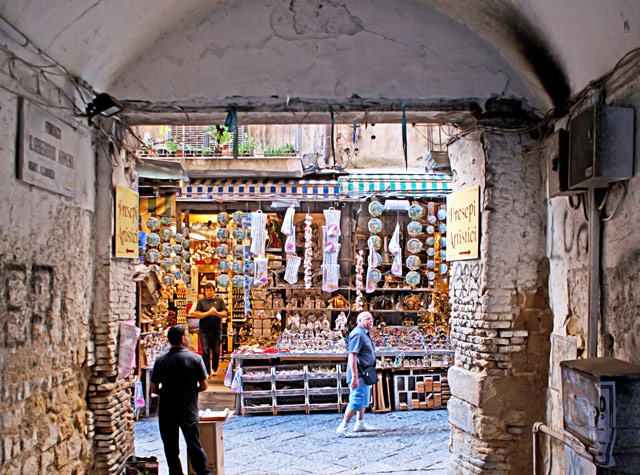
20. Marvel at some unique artworks before you leave
With its unique archaeological collections, the Museo Archeologico Nazionale di Napoli, is one of the most ancient and important museums in the world.
The first impulse for the museum was given when Charles III of Bourbon promoted the excavations of Pompeii. At about the same time he also wanted to set up a unique Museo Farnesiano based on the rich collection inherited from his mother Elisabeth Farnese. It was his son Ferdinand IV who chose the current location to house both the relics from Pompeii and the Farnese collection.
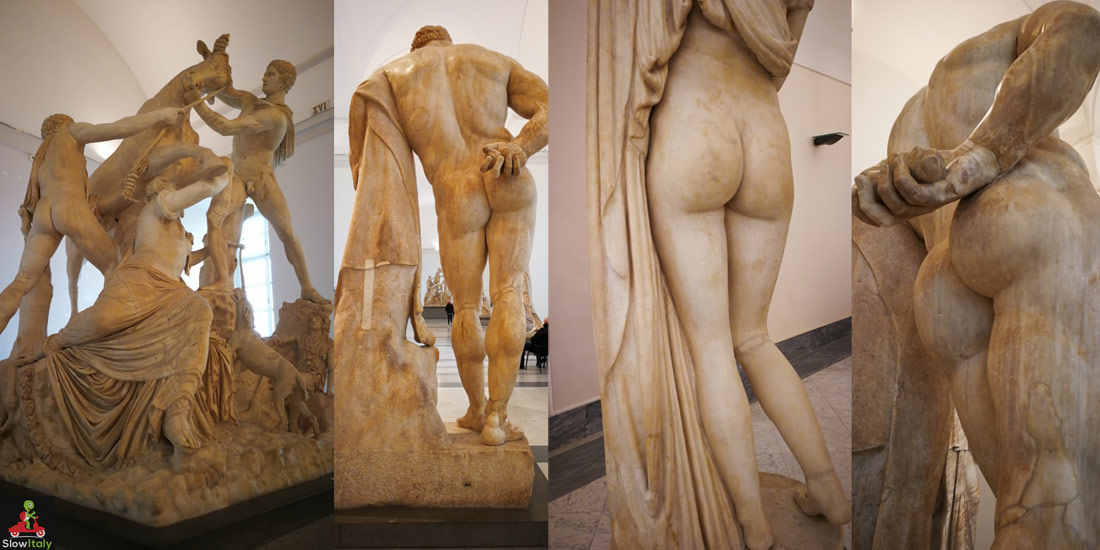
In 1957, when all the paintings of the museum were moved to Capodimonte, the museum was renamed according to its sole identity as Archaelogical Museum.
Besides it unique archaeological collections, including some of the most beautiful mosaics from the villas of Pompeii, and its secret chamber, the museum houses some important art works such as the Farnese Bull, Farnese Hercules and Aphrodite Kallipygos.
As a final note…
Of course, an unmissable part of Neapolitan culture is the famous neapolitan pizza. As Naples is the birth place of the pizza, you can hardly find a list of Top 10 things to-do in Naples, NOT mentioning it. In this article, we chose to give priority to other points of interest. However, as a final note, here is what you need to know. Use your inner radar and don’t be fooled by an arm’s length menu with pizzas of every description. Less is usually more, and pizza is no exception to the rule! If this is your first time in Naples, stick to the traditional ones from a reputable pizzeria, either a margherita (topped with tomatoes, mozzarella and basilicum) or a marinara (with fresh tomatoes, garlic and origanum), as the true taste of the Neapolitan pizza lies in its simplicity and the quality of its (basic) ingredients.
Day trips
Naples also forms an excellent base to visit the beautiful islands of the Gulf of Naples: Procida, Capri and Ischia.

